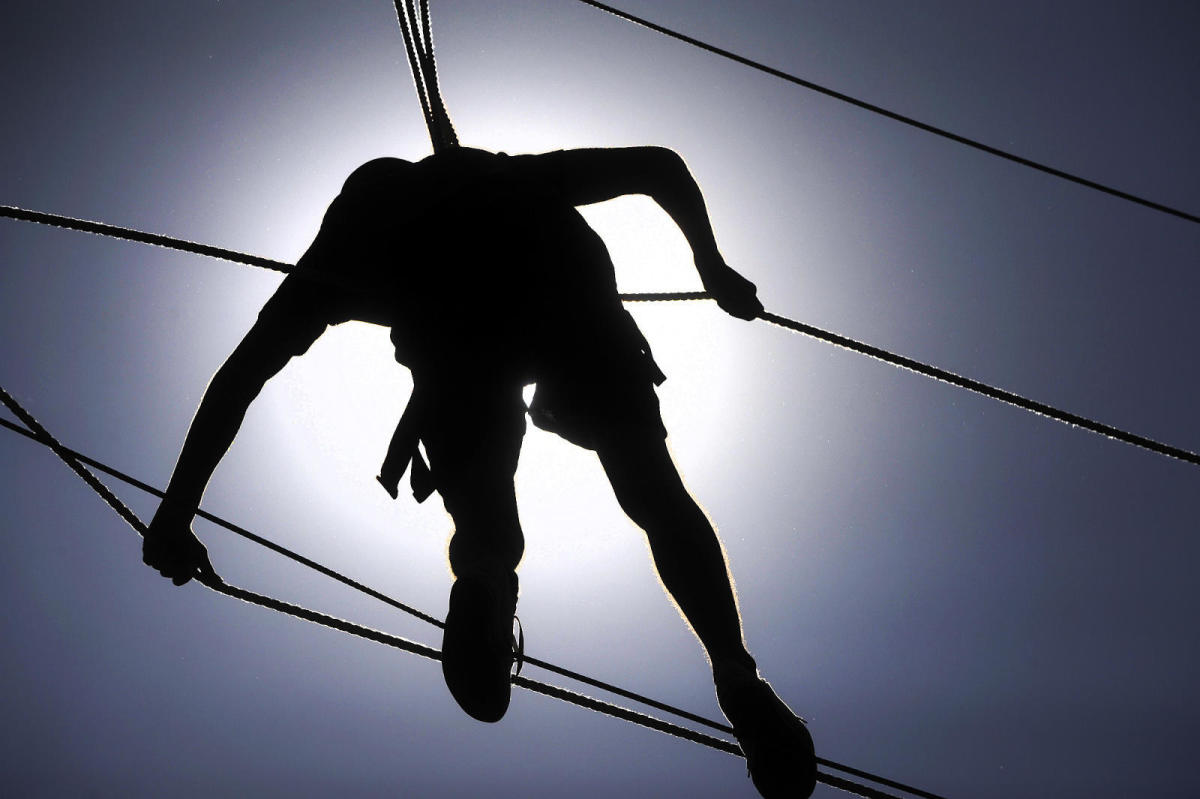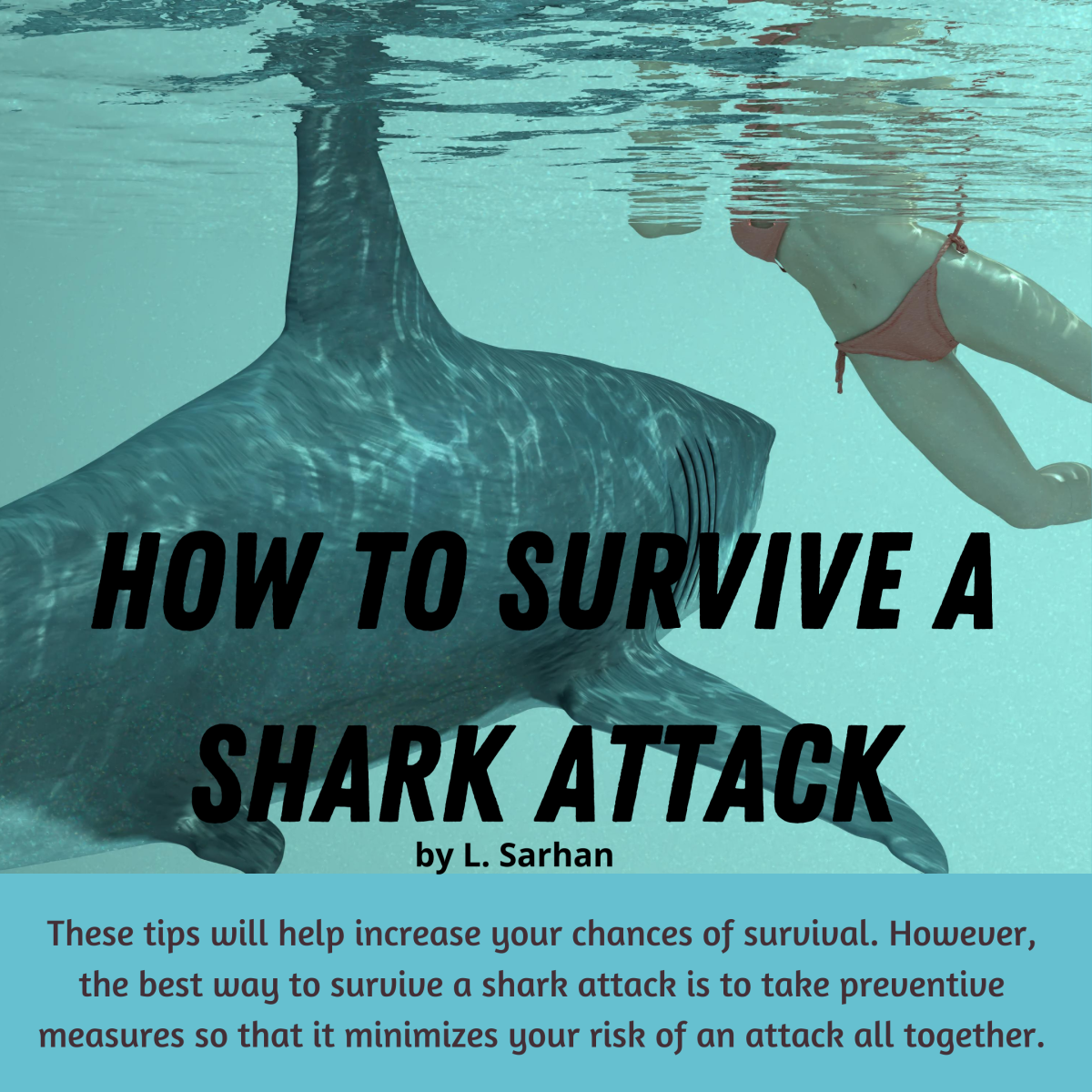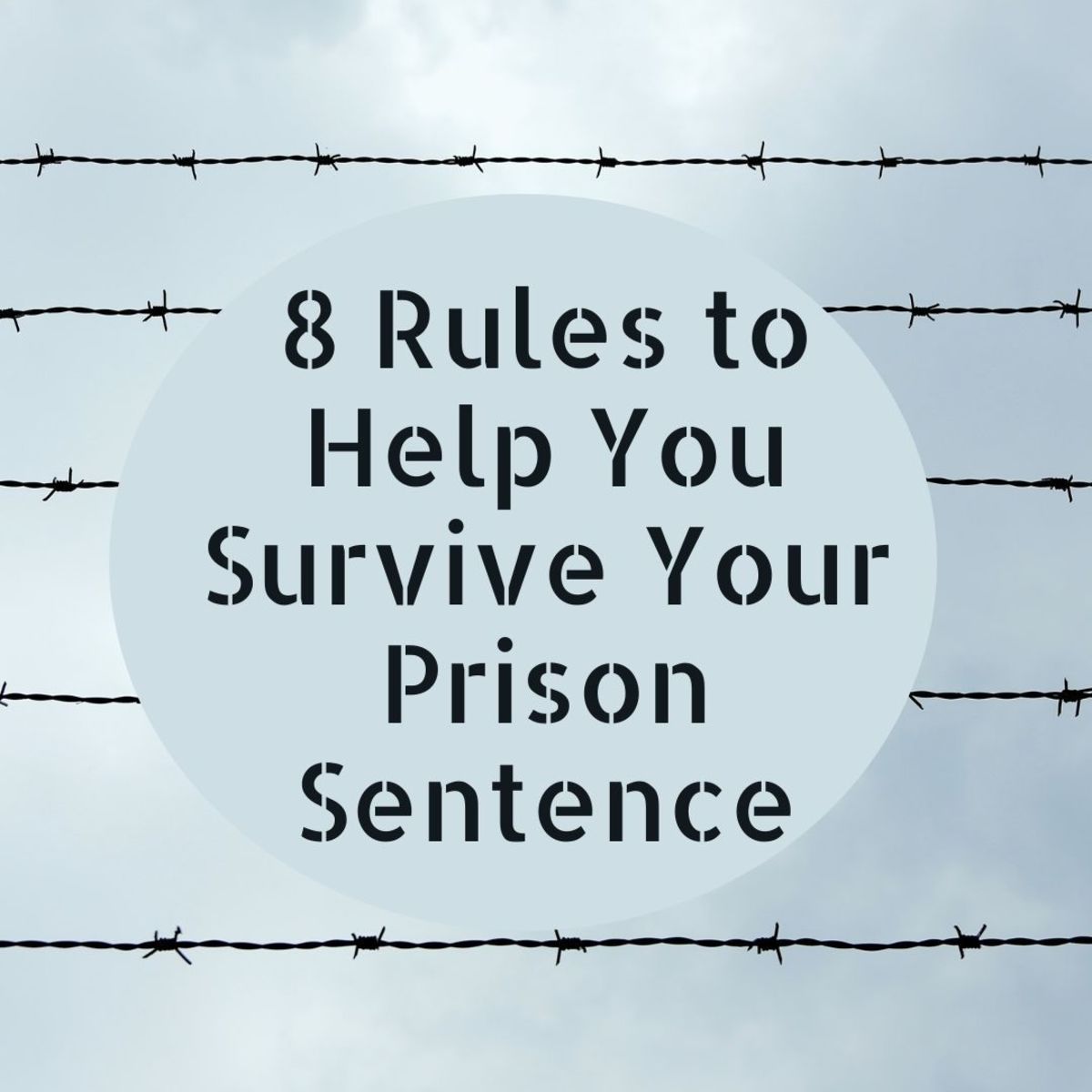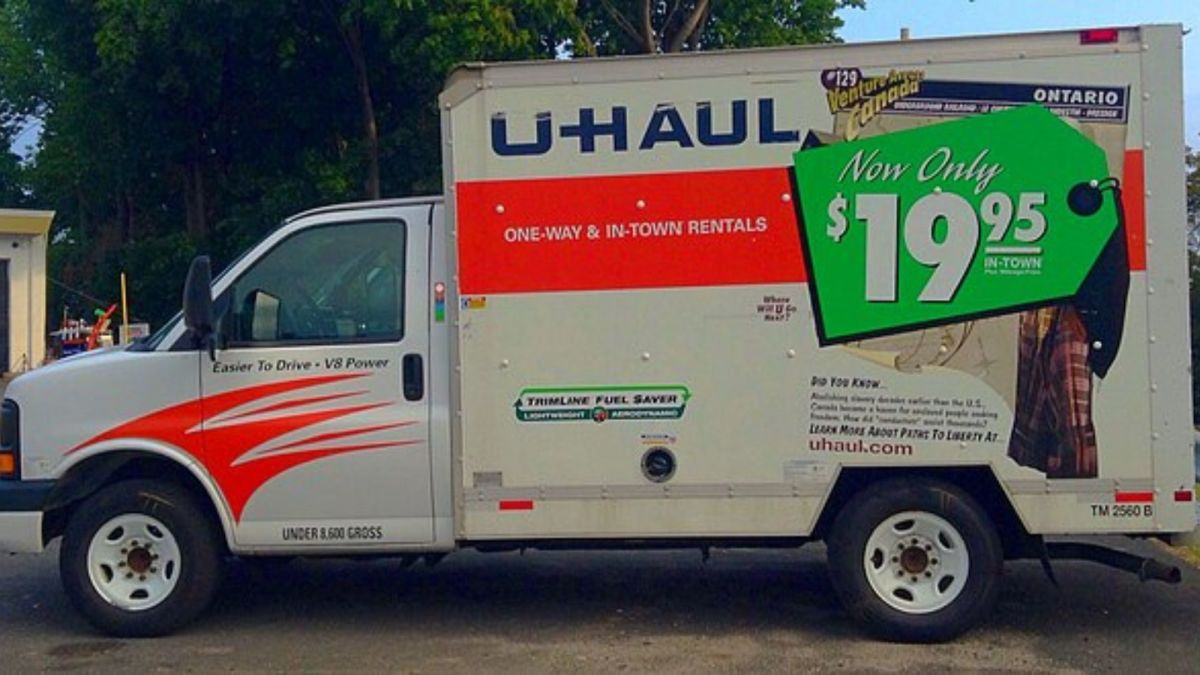How to Survive a Plane Crash
Surviving a Plane Crash - What You Need To Know
The Top Tips For Surviving A Plane Crash:
When it comes to plane crashes the bad news is that the old cliche that air travel is the safest form of travel isn't actually true. In reality, the facts are that on a per journey basis, going by train is actually safer, although air travel is safest on a per mile basis because air journeys involve such long distances.
The good news is that in the 568 plane crashes in the US between 1993 and 2000 over 90% of the passengers survived.
So how can you maximise your chances of surviving a plane crash? Read on:
Plane Crash On The Hudson River
![Greg L [CC BY 2.0 (https://creativecommons.org/licenses/by/2.0)], via Wikimedia Commons Greg L [CC BY 2.0 (https://creativecommons.org/licenses/by/2.0)], via Wikimedia Commons](https://usercontent2.hubstatic.com/14368381_f520.jpg)
Are plane crashes survivable?
The simple answer to that is yes, according to the experts. In fact, even if you have the incredible misfortune to be involved in a plane crash, there is a 90% chance that there will be survivors onboard. Following certain simple steps can help to make sure that you are one of those survivors.
According to world leading aviation safety expert Professor Ed Galea, of the University of Greenwich:
"Surviving an aircraft crash is not a matter of fate. You can help yourself getting out of an aircraft quickly, and so there are things you can do to improve your chances of surviving," says Professor Galea.
What are those things? Read on
Relax: The annual risk of being killed in a plane crash for the average American is about 1 in 11 million.
Choose An Emergency Exit Seat...
Or as close as you can get..
Whilst there is much dispute over where in the plane is the safest place to sit, one thing almost every expert agrees on is that your chance of survival is much better if you sit within five rows of an emergency exit. This applies whichever class you are on in the plane.
In an emergency you should then check that the emergency door closest to you is operating and make your way to it.
Your chances will also be improved if you choose airlines where only able bodied adults are allowed to occupy emergency exit rows.
![Christopher Doyle from Horley, United Kingdom [CC BY-SA 2.0 (https://creativecommons.org/licenses/by-sa/2.0)], via Wikimedia Commons Christopher Doyle from Horley, United Kingdom [CC BY-SA 2.0 (https://creativecommons.org/licenses/by-sa/2.0)], via Wikimedia Commons](https://usercontent2.hubstatic.com/14368405_f520.jpg)
Plan Your Exit
Know how to get out of the plane.
When you first get onto the plane, make a plan. In the event of an emergency it is unlikely that you will be able to think clearly and logically. If you have already made a plan of how you will exit it will be much easier for you to react quickly.
Your plan should involve locating the nearest emergency exit and counting the number of rows to it so that you could find it in the dark. Know which would be your second choice in case a crash or fire renders that exit out of order.Also, work out where your lifejacket actually is, and make sure you know how to put it on.
![David Lytle from San Francisco, CA, USA [CC BY 2.0 (https://creativecommons.org/licenses/by/2.0)], via Wikimedia Commons David Lytle from San Francisco, CA, USA [CC BY 2.0 (https://creativecommons.org/licenses/by/2.0)], via Wikimedia Commons](https://usercontent1.hubstatic.com/14368418_f520.jpg)
Practice Undoing Your Seat Belt
Especially for Small Children
This is the kind of advice that sounds too basic to be of any use, but in a plane crash you have a very short window to get out of the plane alive. How fast you act can determine whether you survive.
Research shows that many people waste valuable seconds being unable to release their seatbelt through panic. For this reason when you take your seat practice undoing the seatbelt several times to be sure that you are used to the mechanism. Make sure any children with you also know how to release the belt. Consider a CARES Child Aviation Restraint System
People often go into shock in an emergency and fail to react as they should. Knowing how to operate the seatbelt release will help prevent you trying to undo it like a car seatbelt if you are in a state of shock.
![Daniel Schwen [CC BY-SA 4.0 (https://creativecommons.org/licenses/by-sa/4.0)], from Wikimedia Commons Daniel Schwen [CC BY-SA 4.0 (https://creativecommons.org/licenses/by-sa/4.0)], from Wikimedia Commons](https://usercontent2.hubstatic.com/14368407_f520.jpg)
Watch The Cabin Crew
Although you obviously should listen to the cabin crew during the safety demonstration, particularly in reference to locating the emergency exits and not inflating life jackets until you are out of the aircraft, you should also listen to them in the case of an emergency.
Cabin crew are trained in what to do in the event of a crash and can guide you to the nearest safe exit. Know what they look like, which cabin crew are sitting next to you and listen to their instructions.
![Austrian Airlines from Austria [CC BY-SA 2.0 (https://creativecommons.org/licenses/by-sa/2.0)], via Wikimedia Commons Austrian Airlines from Austria [CC BY-SA 2.0 (https://creativecommons.org/licenses/by-sa/2.0)], via Wikimedia Commons](https://usercontent2.hubstatic.com/14368421_f520.jpg)
Keep Your Shoes On
One piece of advice given by experts is to wear natural fiber clothing that is less likely to melt and stick to the skin in the case of a fire and to wear firm fitting shoes that will not come off in the case of an accident. Also, to keep your shoes on, at least during the beginning and end of the flight.
One issue that people often fail to recognise is that in the event of a crash the floor can be covered in glass and things that have fallen from overhead lockers. Having shoes on can give your vital extra seconds to move quickly and confidently. When you exit the plane you also need to move 500m from it as quickly as possible in case of an explosion.
Stay sober..
For many of us, particularly when we are setting out on a holiday, the flight is the chance to sit back, have a drink, and perhaps even make the time pass more quickly by having a few too many. Whilst this might be a relaxing and enjoyable start to a holiday, it certainly isn't the safest one.
You have around 90 seconds to get out of a plane if you want to maximise your chance of survival. If you want to use those 90 seconds in the best way possible you need to be alert. For this reason, experts advise that the best way to get out of a plane crash alive is not to take sleeping pills and not to get drunk.
![Quinn Dombrowski [CC BY-SA 2.0 (https://creativecommons.org/licenses/by-sa/2.0)], via Wikimedia Commons Quinn Dombrowski [CC BY-SA 2.0 (https://creativecommons.org/licenses/by-sa/2.0)], via Wikimedia Commons](https://usercontent1.hubstatic.com/14368460_f520.jpg)
Survive a Plane Crash : Understand Panic
Have you ever been in a car crash? How did you react?
In a plane crash most people experience some level of panic. What most people don't realise though is that that panic can manifest itself by them not doing anything, rather than running around screaming. Many people who have been in a car crash will have reacted in this way, sitting in the car motionless whilst they digest what has happened. However, in a plane crash a reaction like this could be fatal. What counts in this situation is reacting quickly and sensibly.
Knowing about this common reaction can help you to prepare yourself and ensure that you react appropriately if you are involved in a crash. You have seconds to get out, and you need to use them. In the event of an accident get out, quickly. Go over the seats if the aisles are blocked, but make sure that you get moving, fast.

Protect Your Legs
One of the most frequently reported injuries in a plane crash is legs being broken below the knee.
If you are ever in an emergency landing situation consider ways to protect your legs. Place them firmly on the ground to stop them flying forward with your feet flat to the floor, and if possible try and protect them from the metal of the seat in front with a pillow or similar.
Also, try and protect your head with a blanket or pillow, and make sure that you remove glasses, headphones, or anything around you that could injure you in a crash. Place your bag under the seat in front to stop your legs going under the seat and getting trapped or broken.
Brace, Brace, Brace!!
The brace position is, according to some experts, the best way to protect yourself from being injured or killed in a plane crash.
This is because it attempts to prevent you from being injured by impact with the seat in front of you. It also protects your legs and ensures that your head is lower than the top of the seat in front of you which will help stop you from being injured by flying objects. Know the brace position and adopt it if instructed by the pilot or cabin crew.
Leave Your Possessions
According to flight attendants it is amazing how many passengers try to collect possessions in an emergency.
To survive a plane crash you need to leave all possessions and get out fast
![Sandrine Z [CC BY-SA 4.0 (https://creativecommons.org/licenses/by-sa/4.0)], from Wikimedia Commons Sandrine Z [CC BY-SA 4.0 (https://creativecommons.org/licenses/by-sa/4.0)], from Wikimedia Commons](https://usercontent2.hubstatic.com/14368439_f520.jpg)
Smoke Inhalation
One of the major causes of death in aviation accidents is smoke inhalation. As planes don't carry smoke hoods for passengers you need to improvise.
If you can find some cloth, wet it and cover your mouth.
Also, stay close to the ground, but on your two feet, as smoke rises. Although some experts suggest crawling to the exit others say that it is better to stay on your feet with your torso bent if possible as you move faster this way.
Resources
I used the following sources when researching this article and they might make interesting reading if you want to learn more about ways to protect yourself when flying.
- How to Get Out Alive - TIME
From hurricanes to 9/11: What the science of evacuation reveals about how humans behave in the worst of times - Q&A: How to Survive a Plane Crash
Former TV producer Ben Sherwood writes about how best to survive a plane crash in his forthcoming book, The Survivors Club - How to survive a plane crash - Telegraph
Following the engine failure on board a Qantas A380, Tim Jepson investigates the best ways to survive a plane crash, from choosing the right seat to avoiding smoke inhalation. - BBC NEWS | UK | Magazine | How to survive a plane crash
Flying may be the safest form of transport, but many of the three million people who take to the air each day are terrified of crashing. Now, more than ever, though, it's possible to survive a plane crash. - Survive a Plane Crash - Wired How-To Wiki
Wired- how to survive a plane crash - How to Survive a Plane Crash
An expert gives tips on how to survive airplane crashes. - NOVA | How Risky Is Flying?
Harvard's David Ropeik explains why judging risk is a risky business.








